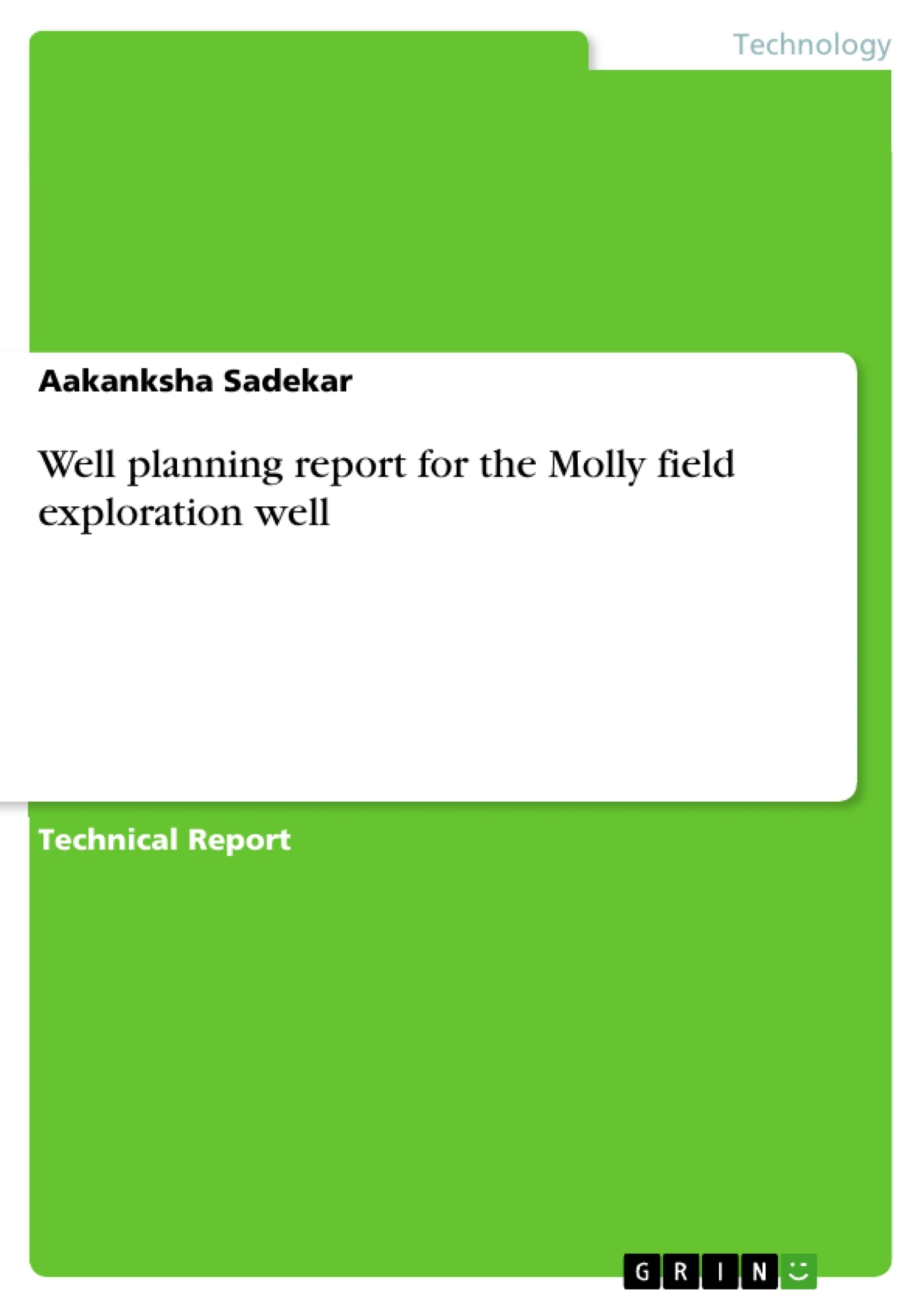The Kenmac Petroleum Corporation is planning to drill a new vertical exploratory well in their newly licensed Molly field. This report covers the detailed description of tasks that are required to be carried out for well planning.
Inhaltsverzeichnis (Table of Contents)
- 1.0 Executive Summary
- 2.0 Introduction
- 3.0 Assumptions
- 4.0 Basis of Well Planning and Design
- 4.1 Drilling Rig Selection
- 4.2 Pore and Fracture Pressure Gradient Estimation
- 4.3 Anticipated Drilling Problems / Lithological Characteristics
- 4.4 Casing Scheme
- 4.5 Mud Programme
- 4.6 Cement Programme
- 4.7 Derrick Capacity
- 4.8 Well Safety Considerations
- 4.9 Completion Design
- 4.10 Well Schematic
- 5.0 Conclusion
- 6.0 References
- 7.0 Appendices
Zielsetzung und Themenschwerpunkte (Objectives and Key Themes)
This report focuses on the detailed planning for drilling an exploratory well in the Molly field, located in the North Sea. The primary goal of this well drilling programme is to safely and efficiently explore the "Carboniferous Siltstone" reservoir at 10000ft TVD, while adhering to environmental regulations. Key themes addressed in the report include:- Selection of the appropriate drilling rig based on operational considerations.
- Estimation of pore and fracture pressure gradients to ensure safe drilling operations.
- Anticipating and mitigating potential drilling challenges based on lithological characteristics.
- Designing a casing scheme that effectively isolates formations and ensures wellbore stability.
- Developing a comprehensive mud and cement program to manage formation pressure and facilitate well completion.
Zusammenfassung der Kapitel (Chapter Summaries)
- 1.0 Executive Summary: Provides a concise overview of the well planning report, highlighting key decisions and design considerations. This includes the selection of the Trident II jack-up rig, the proposed casing scheme, and the overall objective of maximizing economic value and well integrity.
- 2.0 Introduction: Introduces the Molly field and its location within Kenmac Petroleum Corporation's North Sea Block 14/ab. Outlines the objectives of the well drilling program, including safe drilling, efficient bit runs, high-quality cement jobs, and obtaining good quality data from the target reservoir.
- 3.0 Assumptions: This section is likely to present the assumptions made in the well planning process, such as geological data, formation properties, and expected drilling conditions.
- 4.0 Basis of Well Planning and Design: This section delves into the specific design choices and calculations made during the planning process. It covers various aspects, including drilling rig selection, pore and fracture pressure gradient estimation, anticipated drilling problems, casing scheme, mud programme, cement programme, derrick capacity, well safety considerations, completion design, and well schematic.
Schlüsselwörter (Keywords)
This well planning report focuses on the exploration and development of the Molly field in the North Sea. The primary keywords and concepts include: well planning, drilling rig selection, pore and fracture pressure gradient, drilling challenges, casing scheme, mud program, cement program, well safety, completion design, and "Carboniferous Siltstone" reservoir.
Final del extracto de 31 páginas
- subir
- Citar trabajo
- Aakanksha Sadekar (Autor), 2011, Well planning report for the Molly field exploration well, Múnich, GRIN Verlag, https://www.grin.com/document/271887
Leer eBook



